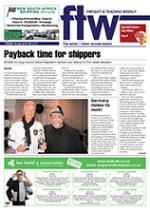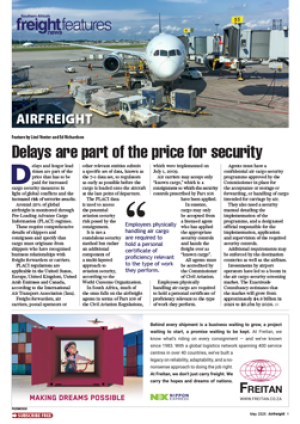The movement of processed
foodstuffs remains the
biggest culprit when it
comes to carbon emissions
in the freight sector – and
finding solutions for this
commodity alone would
make a major difference
to the sector’s carbon
footprint.
According to Louise
Naude, national climate
change officer with the
WWF, it is important to
understand where the
biggest emissions are
coming from.
“There is not one simple
solution that can be applied
across the board,” she said.
An in-depth study into
road freight
emissions
found that
corridor road
freight made
the largest
contribution
to freight
emissions –
followed by
rural road
freight and
metropolitan
road freight.
“And in the corridor
sector the transport of
processed foods makes
up a particularly large
proportion of this freight
segment. The nature of
the commodity makes it
suitable for an intermodal
transport solution and given
that most of it is currently
transported by road, it is an
ideal commodity for a road
to rail shift.”
Commenting on the
pending carbon tax, Naude
said it was understandable
that there was resistance
from the road industry in
light of the continued cost
increases faced, but warned
that an increased carbon
footprint
would
ultimately
carry far
greater costs.
“So with
margins already
squeezed to the
limit we have
to ask ourselves
how we can
reduce our
emissions."
INSERT & CAPTION
An increased carbon
footprint will
ultimately carry far
greater costs than the
proposed carbon tax.
– Louise Naude

